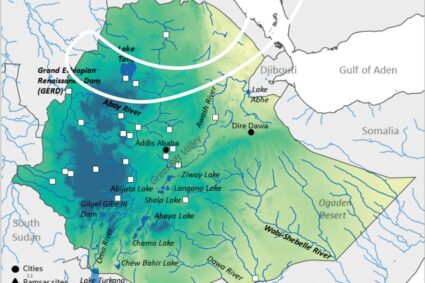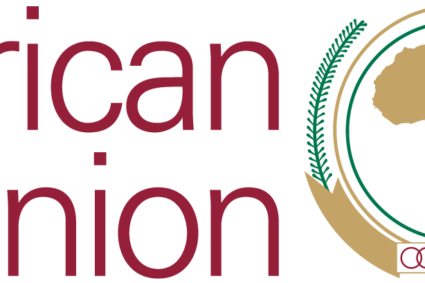
by Ayele Addis Ambelu @ayele-addis ayeleradio@gmail.com
Insufficient yield growth due to inefficient provision of inputs and services, difficulty with respect land lease rights, limited investment on R&D and irrigation, marketing and logistic related problems, and lack of agriculture-specific financial services.
The manufacturing sector remains underdeveloped despite recent efforts to stimulate the sector due to inefficient incentive structure, limited backward and forward linkages, and insufficient incentives for production of import competing activities.
Ethiopia’s vast and diverse mineral resources, with the potential to generate the much needed FX, remain untapped due to a variety of constraints including institutional and technical barriers against large-scale miners, absence of a legal framework to manage the miners’ relationship with local communities, and informality and pricing issues related to gold mining.
While maintaining historical and cultural assets for centuries, sufficient efforts have not yet been made to leverage these assets for economic growth. Challenges include limited accessibility and attractiveness, insufficient marketing and branding, and weak supporting institutions.
At the same time, the economy is facing headwinds from growing macroeconomic imbalances.
While achieving the intended objectives of building human capital and infrastructure and reducing poverty, … efforts to finance public investment programs through, orapid accumulation of debt, and odirecting domestic financial resources to public and priority sectors, … coupled with poor project execution have brought to the fore macroeconomic imbalances, including:
Macroeconomic reforms will aim at correcting imbalances and safeguarding macro-financial stability
A stable macro-financial system supports growth and job creation by:
§Enabling savers to invest their financial assets in the financial system with confidence; §Providing investors the predictability and finance they needed to invest in job-creating projects; and §Allowing consumers to utilize the financial system and smooth their consumption.
… and macro-financial stability requires:
Strengthening public sector finances, Correcting FX imbalances, Controlling inflation, Safeguarding financial stability, Improving access to finance and developing capital markets
Strengthen public sector finances through:
§Maintaining a prudent fiscal policy stance §Improving domestic revenue mobilization §Finalizing ongoing public projects §Enhancing efficiency of public investment §Enhancing operational efficiency, transparency, and governance of SOEs §Implementing the privatization plan.
Fiscal policy will focus on supporting high quality growth and ensuring debt sustainability through revenue mobilization and improving efficiency of public spending.
Correct FX imbalances through:
§Mobilizing FX through privatization and concessional borrowing §Implementing a comprehensive remittance strategy §Improving the incentive structure for diaspora savings by facilitating creation of longer-term saving instruments and allowing banks to pay competitive interest rates §Promoting exports, tourism, and FDI through macroeconomic and structural reforms §Easing controls on FX sales to private sector importers §Improving the FX management and functioning of the interbank market based on further study
Controlling inflation through:
§Containing the growth of reserve money, including by gradually reducing direct advances to the budget §Introducing effective monetary policy and liquidity management instruments §Strengthening the NBE’s analytical capacity §Improving the efficiency of the supply chain and domestic commodity markets
Safeguarding financial stability through:
§Modernizing the operations of CBE and DBE to the level of industry best practices §Upgrading NBE’s financial regulatory framework to international standards §Enforcing the regulatory rules uniformly across banks
Improving financial access through developing capital and financial markets. In particular, reform measures will include:
§Developing a competitive and well-functioning T-bills market §Upgrading the financial market infrastructure through gradually phasing out the NBE bill and facilitating the development of inter-bank money markets §Establishing secondary bond markets and a stock exchange market in collaboration with the private sector and with TA from development partners §Supporting the development of mobile banking to promote financial inclusion
Macroeconomic reforms will be complemented with structural reforms to create an enabling environment for investment…
•Streamlining bureaucratic and regulatory procedures •Improving governance of public institutions, while viewing all institutions(public, private, political, social, civic, the media) as an integrated whole •Improving power reliability and access through üModernizing corporate governance and improving operational efficiency at EEU and EEP üRestoring cost recovery through tariff reforms •Implementing the telecom sector reform •Creating a secure and predictable market access to exports, including by expediting WTO accession and strengthening regional trade integration •Undertake logistic reform to enhance logistics efficiency and invest in logistics infrastructure •Improving the efficiency of domestic markets for goods and services, such as by removing barriers to entry, enforcing the competition Law, and improving the efficiency of the commodity market supply chain.
Agriculture
•Enhance productivity of small-holder farmers and pastoralists through provision of modern inputs and services; •Develop a legal framework that will allow farmers to lease land use rights and become shareholders in large commercial farms; •Modernize livestock production through improving veterinary infrastructure, research and innovation, and establishing linkages with other industries; •Establish effective linkage between agriculture producers and commodity markets as well as the commercial value chain; •Encourage private sector investment in agricultural R&D and exploring PPPs to expand medium and large-scale irrigation infrastructure; •Develop a legal framework for agriculture-specific financial services such as micro-lending, crop insurance, and forward contracts.
Manufacturing
•Revisit and overhaul the incentive structure of our industrial policy; •Prioritize the development of manufacturing sectors with strong local content such as agro-processing and leather products; •Strengthen the backward linkage of emerging manufacturing value chains through encouraging domestic production of primary and intermediate industrial inputs; •Promote import competing industries, leveraging on large domestic market size; •Develop industrial relations framework to achieve fair pay and minimize disruptions.
Mining
•Formalize and support artisanal and small-scale mining; •Review gold pricing to reduce incentives for contraband trade; •Address political and legal issues with local communities and incentivizing miners to engage and invest in local communities; •Address technical and institutional barriers against large-scale mining projects; •Develop policies and institutional capacities to create a sustainable and inclusive mining sector with strengthened geological information and diversified product base with industrial input focus.
Tourism
•Improve the attractiveness of and access to historical, cultural, and natural tourist sites; •Promote tourist sites through marketing, branding, and packaging based on customer segmentation; •Modernizing the standards for tourism and relate service provides ; •Develop new tourist sites and products; •Strengthen the linkage to the agriculture sectors by promoting use of local produces at hotels and restaurants.
ICT and creative industries
Efforts will be geared towards exploring new sources of productivity and job growth, levering on the rapidly growing educated young labour force. In this regard, the reform agenda will focus on: •Building inclusive digital economy through: oExpediting the telecom reform agenda and ongoing work on digital ID system; oSandbox regulatory approaches to support technology start-ups and incumbents; oScaling up ongoing government ICT initiatives such as e-governance, WoredaNet, the rural connectivity program, and rural public internet access centres; oPromoting e-commerce and digitization of the financial and logistic sectors; oDeveloping ICT parks and fostering the development of the ICT ecosystem; oInvesting on ICT literacy and advanced vocational and tertiary education. •Creating an enabling environment for creative industries
Macroeconomic outlook
•The rapid growth will be sustained through: üStepped-up efforts to finalize ongoing public investment projects üIncreased private sector investment facilitated by the reform agenda •The sources of growth will be rebalanced and diversified, unlocking the full potential. •The strong recovery in imports will widen the current account deficit in the near term, üHowever, this will reverse in the medium term as exports pickup, reflecting the impacts of the reform agenda •Prudent monetary policy will help control inflation •Public sector reforms will ensure debt sustainability, while continuing to support growth.
Overall developmental goals for the next 10 years
•Sustain a rapid and inclusive economic growth setting the country on a path to prosperity •Build a resilient and diversified middle income-level economy achieved through; üBuilding a dynamic private sector üRaising agricultural productivity and modernization of agriculture üDiversification, technological upgrading, and innovation üInclusive and sustainable industrialization and urbanization üInclusive digital economy •Eradicate extreme poverty and hunger, and reduce the proportion of people living in poverty by half •Build human capabilities üAffordable health care üQuality education to relevant school-age children üSafe drinking water üAffordable, reliable and clean energy and transportation services •Build an emerging market economy-level modern policy and institutional framework •Build an efficient, resilient, and well-functioning financial market system that provides affordable access to finance to investors and consumers












